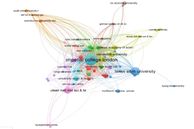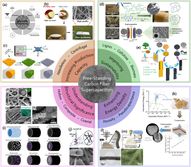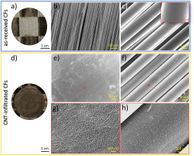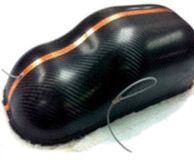BibTex format
@article{Valkova:2022:10.1016/j.compositesa.2022.106860,
author = {Valkova, M and Anthony, DB and Kucernak, ARJ and Shaffer, MSP and Greenhalgh, ES},
doi = {10.1016/j.compositesa.2022.106860},
journal = {Composites Part A: Applied Science and Manufacturing},
title = {Predicting the mechanical behaviour of structural supercapacitor composites},
url = {http://dx.doi.org/10.1016/j.compositesa.2022.106860},
volume = {156},
year = {2022}
}
RIS format (EndNote, RefMan)
TY - JOUR
AB - Multifunctional structural power composites may transform transport electrification, and other applications, but require performance and reliability improvements. Computational modelling has the potential to accelerate their development and deployment. This work addresses the lack of predictive models for the mechanical behaviour of structural supercapacitor composites exploiting carbon aerogel-modified carbon fabric electrodes. The elastic behaviour was investigated using finite element analysis of quasi-meso-scale periodic unit cell models, considering the effects of constituent properties, defects, stacking geometry, and boundary conditions. Nanoindentation was used to evaluate the Young’s modulus of carbon aerogel. Parametric modelling demonstrated a strong influence of the ply offset and matrix materials on the composite elastic properties. The initial numerical results overpredicted the actual performance measured from tensile and in-plane shear experiments in the literature. Optical, scanning electron and micro X-ray imaging revealed extensive pre-cracking and voidage in the physical laminates. Additional computational investigations showed that the pre-cracks were associated with a degradation of shear stiffness. The remaining performance gap was attributed to voidage. The present study highlights that challenges for mechanical performance and its prediction stem from the presence of processing defects and a lack of in-situ material data. Nevertheless, the models identify the potential of hierarchical laminates containing aerogels to generate sizable performance improvements, both in multifunctional and purely structural contexts.
AU - Valkova,M
AU - Anthony,DB
AU - Kucernak,ARJ
AU - Shaffer,MSP
AU - Greenhalgh,ES
DO - 10.1016/j.compositesa.2022.106860
PY - 2022///
SN - 1359-835X
TI - Predicting the mechanical behaviour of structural supercapacitor composites
T2 - Composites Part A: Applied Science and Manufacturing
UR - http://dx.doi.org/10.1016/j.compositesa.2022.106860
UR - http://hdl.handle.net/10044/1/95459
VL - 156
ER -









